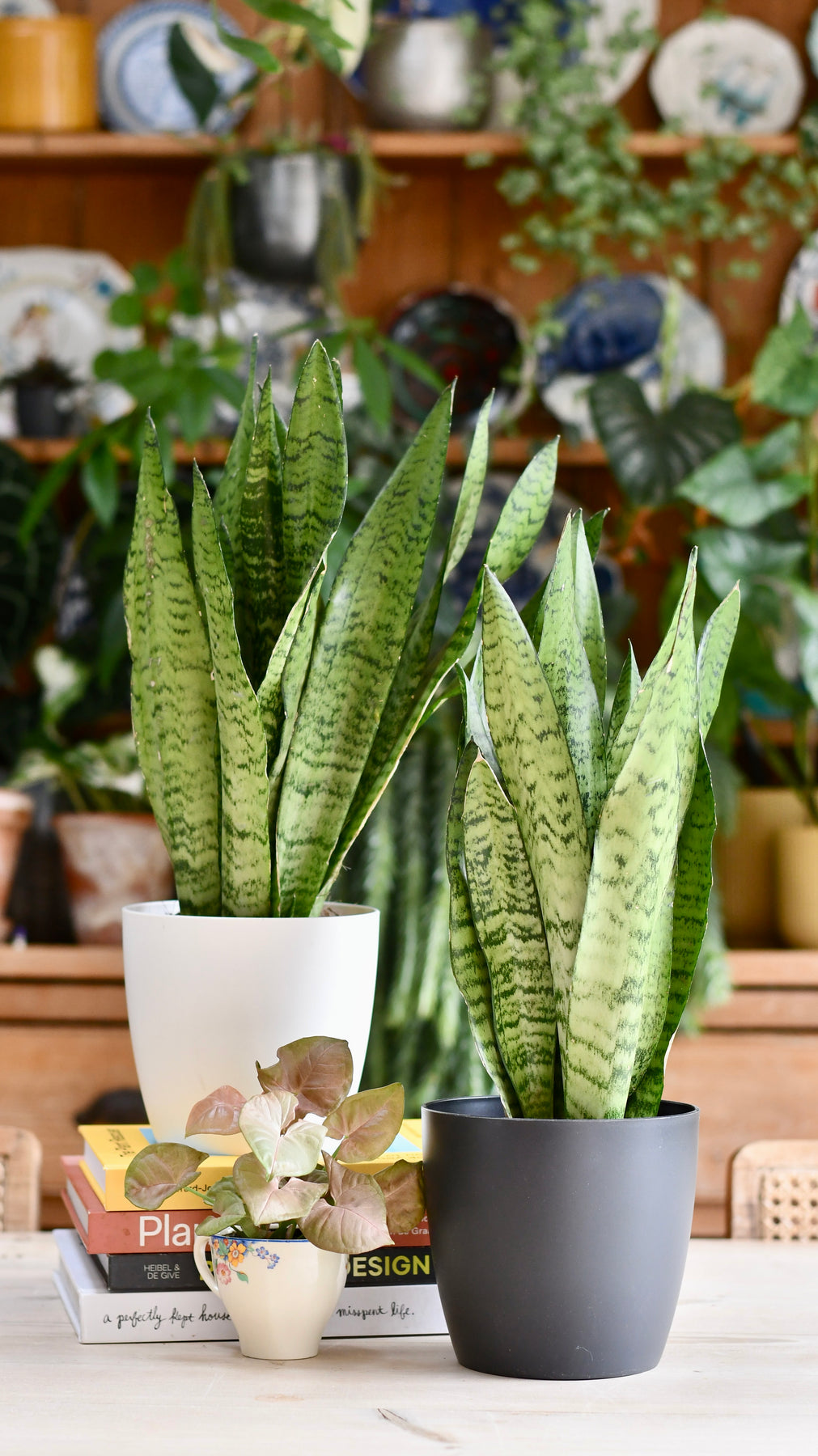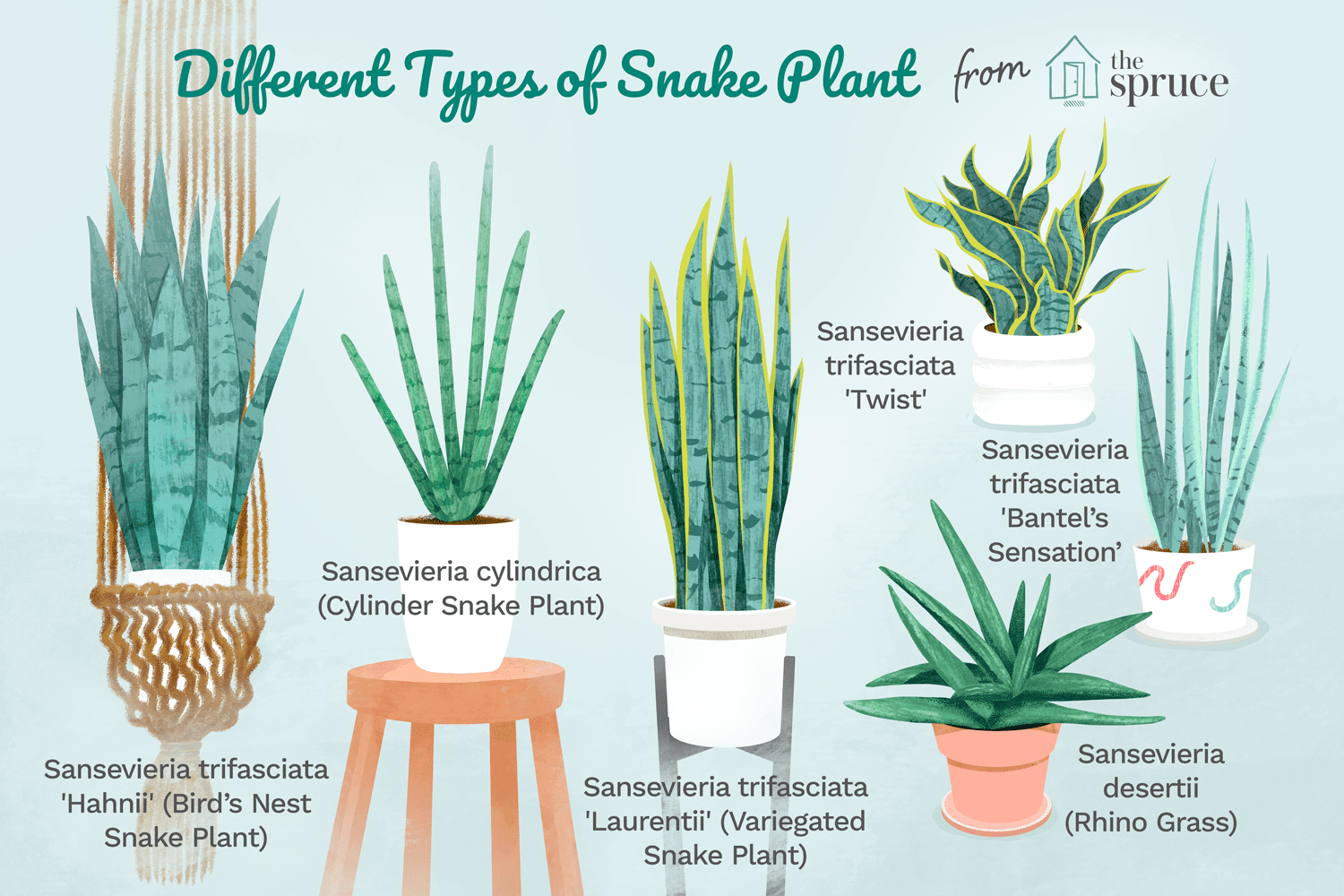Snake plants are popular indoor plants. They are also called Mother-in-Law’s Tongue. These plants are easy to care for. They can grow in many places. This guide will help you take care of your snake plants.
Why Choose Snake Plants?
Snake plants are great for many reasons:
- They are very hardy.
- They need little water.
- They can grow in low light.
- They improve air quality.
How to Water Snake Plants
Watering is an important part of plant care. Snake plants do not need much water.
Here are some tips on watering:
- Check the soil before watering.
- Make sure the top two inches are dry.
- Water the plant deeply.
- Do not let it sit in water.
In winter, water even less. The plant grows slowly then. Too much water can harm the roots.

Credit: www.happyhouseplants.co.uk
Choosing the Right Pot
The pot you use is important. Choose a pot with drainage holes. This helps excess water escape.
Use a pot that is not too big. Snake plants like to be a bit root-bound. This means they like their roots snug.
Soil for Snake Plants
The soil you use can help your snake plant grow well. Use a well-draining soil mix. You can buy cactus soil. You can also mix regular potting soil with sand.
Light Requirements
Snake plants can grow in many light conditions. They can thrive in:
- Low light
- Indirect sunlight
- Bright, direct sunlight
However, avoid direct sunlight for long periods. This can burn the leaves.
Temperature and Humidity
Snake plants like warm places. They prefer temperatures between 60°F and 80°F. They can survive in cooler temperatures, but not below 50°F.
Humidity is not a big issue for snake plants. They can adapt to low humidity. This makes them good indoor plants.
Fertilizing Your Snake Plant
Fertilizing helps plants grow strong. Use a balanced, water-soluble fertilizer. Fertilize during the growing season.
This is usually spring and summer. You can fertilize once a month. In winter, do not fertilize at all.
Repotting Your Snake Plant
Repotting is when you move your plant to a bigger pot. You should repot every 2 to 3 years. This gives the roots more space.
Look for signs that it needs repotting:
- Roots are coming out of the pot.
- The soil dries out too fast.
- The plant looks crowded.
When repotting, gently remove the plant. Do not damage the roots. Add fresh soil and water it well.
Common Problems with Snake Plants
Even with care, problems can happen. Here are some common issues:
Yellowing Leaves
If the leaves turn yellow, it may be overwatering. Check the soil. If it is wet, wait to water again.
Brown Tips
Brown tips can mean low humidity. Try misting the plant or moving it to a more humid place.
Leaves Dropping
If leaves drop, check for pests. Look under the leaves. Treat with insecticidal soap if needed.

Credit: www.thespruce.com
Propagation of Snake Plants
Propagation means making new plants. Snake plants are easy to propagate. You can do this in a few ways:
Leaf Cuttings
Cut a healthy leaf into sections. Each section should be about 3 to 4 inches long. Place the cuttings in water or soil. New roots will grow in a few weeks.
Dividing The Plant
You can also divide the plant. Remove it from the pot. Gently pull apart the roots. Replant each section in its own pot.
Conclusion
Taking care of snake plants is simple and fun. They are perfect for beginners. With proper care, they can live for many years.
Remember to water them sparingly. Use the right soil and pot. Place them in good light.
With these tips, your snake plants will thrive. Enjoy your beautiful green friends!

















Leave a Review